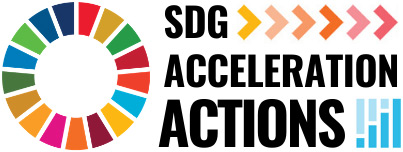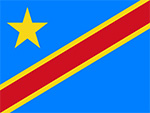KFF Entrepreneur Challenge
(
Non-governmental organization (NGO)
)
#SDGAction43237
Description
The project beneficiary selection will be based on a three-stage process. The first stage will be a pre-screening consisting of trust-building and training activities over a one-week period to identify highly motivated candidates. In the second stage, candidates who demonstrate strong interest during the pre-screening period will then be eligible for the entrepreneurial mentorship program. Finally, a subset of beneficiaries will be selected to receive post-creation support based on the potential viability of their new or existing self-employment project (third stage). The selection will be based on the business plans developed as part of the entrepreneurial mentorship program which will be assessed by program staff and members of the disability community and women’s organizations (including CBO or DPO).
The eight-selected organizations will receive a capacity building and strategic support alongside the award to run a 3-months-non-residential and in-person entrepreneurship training that will improve the entrepreneurial and management skills young people with disabilities to launch or expand their business. The course will focus on how young people can create jobs for themselves and others through entrepreneurship. It seeks to increase the participant ‘s understanding of the creative process and how such a process can help improve creative problem-solving skills. It will provide youths with the necessary skills to initiate businesses, make healthy and productive life choices and reinforce professional skills in the workplace. It will also help them to sustain and grow their businesses.
The KFF Program advisors will support the KFF Entrepreneur Challenge partners in the design and implementation of the program and will contribute to creating an informal alumni network who eventually will become employers and/or mentors to their former peers. Moreover, many alumni came back to the organization after succeeding, to check how they can be of any help to their former peers. KFF will organize annual events to connect program graduates with business experts, donors, and entrepreneurs, and shall be running a platform to meet peers, experienced auto-entrepreneurs, potential employers, moderators, and business experts.
KFF has worked alongside the program partners to complete a base-line assessment on knowledge about entrepreneurship and existing labor market, socio-demographic characteristics, and current participation and engagement in professional activities. The results of this assessment helped us to design this program and will also help us to assess the social impact of the intervention.
The project has a number of development indicators to capture the extent by which it achieved its expected results:
- The number of direct beneficiaries and the percentage of female beneficiaries;
- The direct project beneficiaries who successfully completed entrepreneurship training and the percentage of female beneficiaries;
- The number of youth entrepreneurs who received post creation follow up support for at least 6 months and the percentage of female beneficiaries.
2) Echoing Green (NGO);
3) United States African Development Foundation (Government);
4) Handicap International (NGO);
5) FINCA (Private sector).
SDGS & Targets
Goal 10
Reduce inequality within and among countries
10.1
By 2030, progressively achieve and sustain income growth of the bottom 40 per cent of the population at a rate higher than the national average
10.1.1
Growth rates of household expenditure or income per capita among the bottom 40 per cent of the population and the total population
10.2
By 2030, empower and promote the social, economic and political inclusion of all, irrespective of age, sex, disability, race, ethnicity, origin, religion or economic or other status
10.2.1
Proportion of people living below 50 per cent of median income, by sex, age and persons with disabilities
10.3
Ensure equal opportunity and reduce inequalities of outcome, including by eliminating discriminatory laws, policies and practices and promoting appropriate legislation, policies and action in this regard
10.3.1
Proportion of population reporting having personally felt discriminated against or harassed within the previous 12 months on the basis of a ground of discrimination prohibited under international human rights law
10.4
Adopt policies, especially fiscal, wage and social protection policies, and progressively achieve greater equality
10.4.1
Labour share of GDP
10.4.2
Redistributive impact of fiscal policy
10.5
Improve the regulation and monitoring of global financial markets and institutions and strengthen the implementation of such regulations
10.5.1
Financial Soundness Indicators
10.6
10.6.1
Proportion of members and voting rights of developing countries in international organizations
10.7
Facilitate orderly, safe, regular and responsible migration and mobility of people, including through the implementation of planned and well-managed migration policies
10.7.1
Recruitment cost borne by employee as a proportion of montlhy income earned in country of destination
10.7.2
Number of countries with migration policies that facilitate orderly, safe, regular and responsible migration and mobility of people
10.7.3
Number of people who died or disappeared in the process of migration towards an international destination
10.7.4
Proportion of the population who are refugees, by country of origin
10.a
10.a.1
Proportion of tariff lines applied to imports from least developed countries and developing countries with zero-tariff
10.b
10.b.1
Total resource flows for development, by recipient and donor countries and type of flow (e.g. official development assistance, foreign direct investment and other flows)
10.c
By 2030, reduce to less than 3 per cent the transaction costs of migrant remittances and eliminate remittance corridors with costs higher than 5 per cent
10.c.1
Remittance costs as a proportion of the amount remitted
Goal 1
End poverty in all its forms everywhere
1.1
By 2030, eradicate extreme poverty for all people everywhere, currently measured as people living on less than $1.25 a day
1.1.1
Proportion of the population living below the international poverty line by sex, age, employment status and geographical location (urban/rural)
1.2
By 2030, reduce at least by half the proportion of men, women and children of all ages living in poverty in all its dimensions according to national definitions
1.2.1
Proportion of population living below the national poverty line, by sex and age
1.2.2
Proportion of men, women and children of all ages living in poverty in all its dimensions according to national definitions
1.3
Implement nationally appropriate social protection systems and measures for all, including floors, and by 2030 achieve substantial coverage of the poor and the vulnerable
1.3.1
Proportion of population covered by social protection floors/systems, by sex, distinguishing children, unemployed persons, older persons, persons with disabilities, pregnant women, newborns, work-injury victims and the poor and the vulnerable
1.4
By 2030, ensure that all men and women, in particular the poor and the vulnerable, have equal rights to economic resources, as well as access to basic services, ownership and control over land and other forms of property, inheritance, natural resources, appropriate new technology and financial services, including microfinance
1.4.1
Proportion of population living in households with access to basic services
1.4.2
Proportion of total adult population with secure tenure rights to land, (a) with legally recognized documentation, and (b) who perceive their rights to land as secure, by sex and by type of tenure
1.5
By 2030, build the resilience of the poor and those in vulnerable situations and reduce their exposure and vulnerability to climate-related extreme events and other economic, social and environmental shocks and disasters
1.5.1
Number of deaths, missing persons and directly affected persons attributed to disasters per 100,000 population
1.5.2
Direct economic loss attributed to disasters in relation to global gross domestic product (GDP)
1.5.3
Number of countries that adopt and implement national disaster risk reduction strategies in line with the Sendai Framework for Disaster Risk Reduction 2015-2030
1.5.4
Proportion of local governments that adopt and implement local disaster risk reduction strategies in line with national disaster risk reduction strategies
1.a
Ensure significant mobilization of resources from a variety of sources, including through enhanced development cooperation, in order to provide adequate and predictable means for developing countries, in particular least developed countries, to implement programmes and policies to end poverty in all its dimensions
1.a.1
Total official development assistance grants from all donors that focus on poverty reduction as a share of the recipient country's gross national income
1.a.2
Proportion of total government spending on essential services (education, health and social protection)
1.b
Create sound policy frameworks at the national, regional and international levels, based on pro-poor and gender-sensitive development strategies, to support accelerated investment in poverty eradication actions
1.b.1
Pro-poor public social spending
SDG 14 targets covered
| Name | Description |
|---|
Deliverables & Timeline
Resources mobilized
Partnership Progress
Feedback
Action Network

Timeline
Entity
Region
- Africa
Geographical coverage
Other beneficiaries
More information
Countries




Contact Information
John Ntonta, Executive Director

